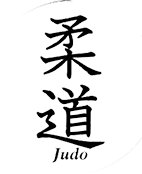Non-Kodokan Kata - non-Japanese origin
Here we will discuss other judo kata that were created outside of Japan (and hence the Kodokan), including:
Here we will discuss other judo kata that were created outside of Japan (and hence the Kodokan), including:
- Budokwai goshinjutsu: This is a solo self defence kata created at the London Budokwai.
- Hikomi-no-kata: This is a contemporary Dutch creation due to Mark Bette and Berber Roorda who created the “kata” as part of a project for their 3 dan promotion exam.
- Hoho kata: This “methods” kata is the study in throwing techniques with various step patterns using backwards, sideways and forward movements. It is a contemporary German creation due to Wolfgang Hofmann.
- Kansetsu-no-kata: This contemporary kata is a study in armlocks.
- Kyushin kata: This contemporary kata was created by Alfred Bates (of the Tokushima Budo Council International) in the United Kingdom. It is his effort to illustrate the principles of Kenshiro Abbe-sensei’s Kyushindo philosophy.
- [Szrejter] Renraku-no-kata: This contemporary kata was created by Edward Szrejter in the United States and is kata of combination techniques using the Nage-no-kata as a basis.
- [Christensen & Tolstoy] Renraku-no-kata: This modern kata was created in Denmark in 1989 by Per Christensen and Alex Tolstoy and consists of two sets of seven combination techniques. For each combination the techniques are executed in rapid succession, with the movement from one to the next being a smooth unbroken sequence.
- Rensa-no-kata: This contemporary kata is a study in the transition from a standing position to a ground position (rensa = chain.) Every action gets completed with a groundwork technique. It is a German creation due to Gerhard Steidele.


